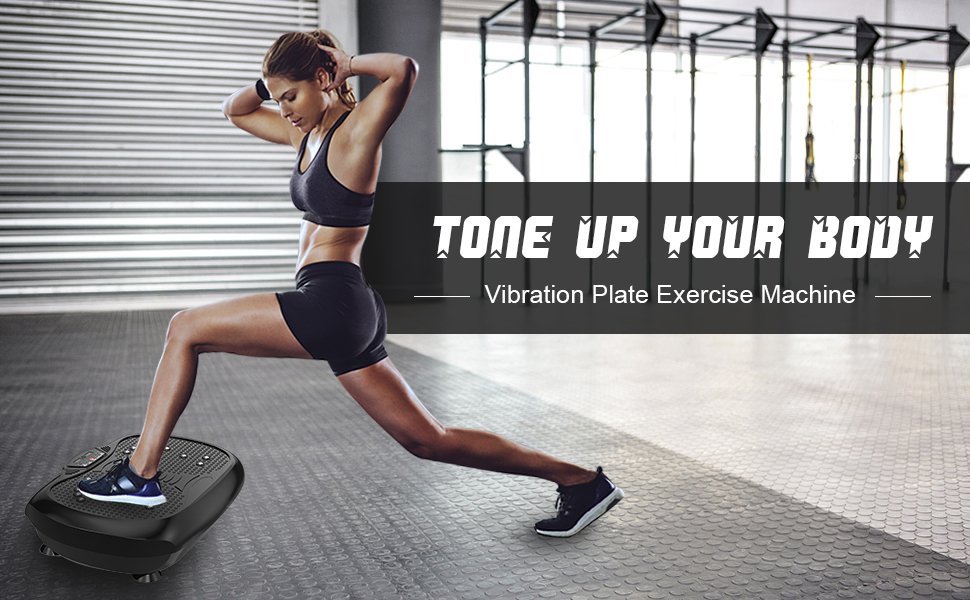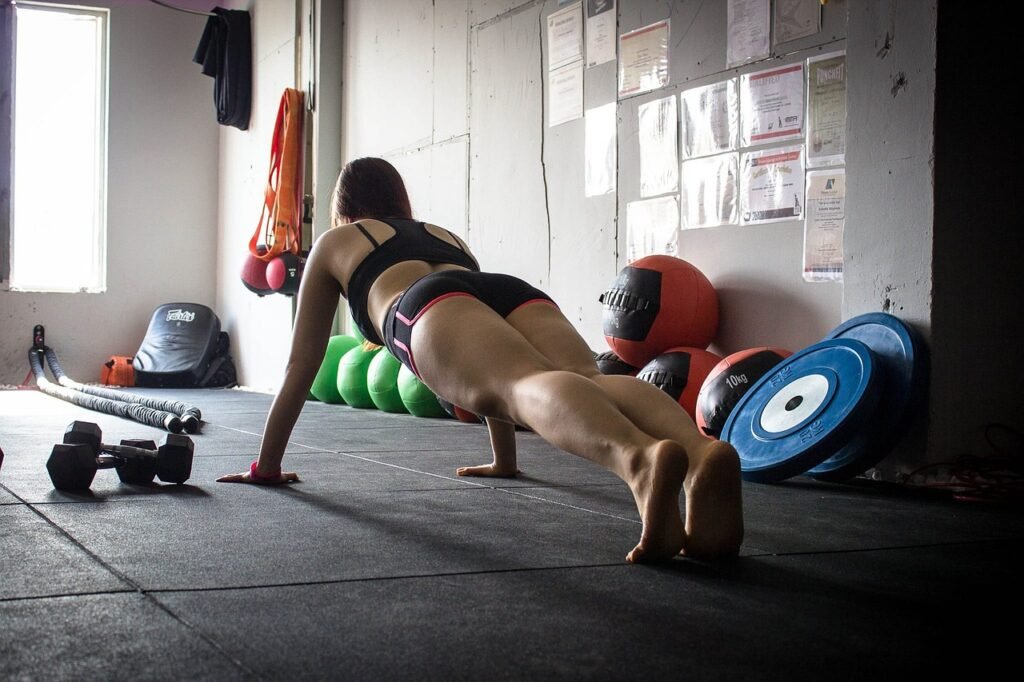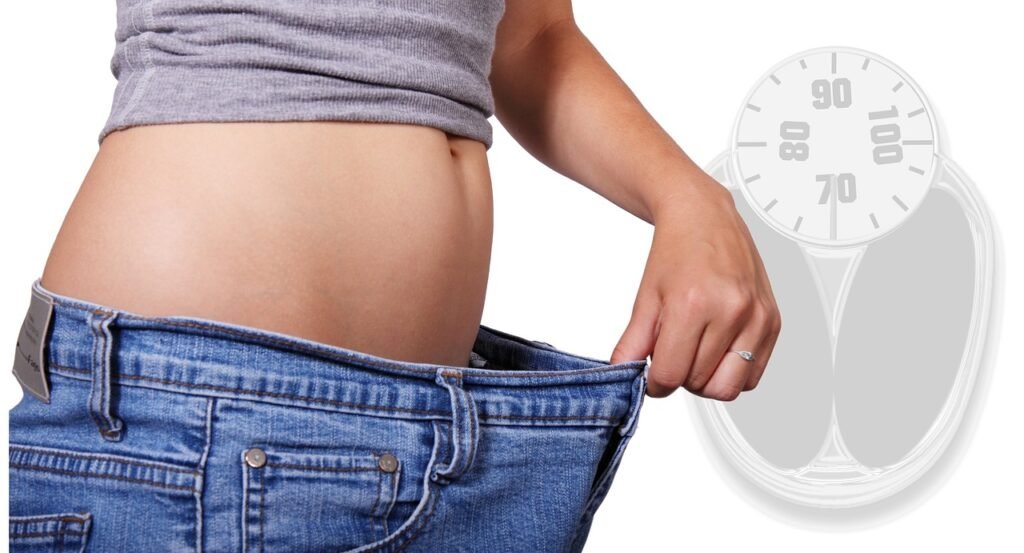
Intro
Are you looking for a fun and effective way to spice up your workout routine? Look no further than vibration plate exercise. Vibration plate exercises are a fantastic way to boost your fitness levels, improve your strength, and enhance your flexibility all at once.
In this blog post, we will explore some of the best vibration plate exercises to help you achieve your fitness goals.
Understanding Vibration Plate Exercise Basics
Engaging in vibration plate exercise means utilizing a platform that vibrates at high frequencies, a method that significantly enhances the effectiveness of various workouts.
This innovative approach to fitness leverages the power of rapid muscle contractions, approximately 30 to 50 times per second, to amplify your exercise efforts.
Such frequent muscle activations not only aim to intensify your workout but also promise a host of benefits including accelerated calorie burn, muscle building, and a notable boost in overall fitness levels.
The uniqueness of this exercise form lies in its ability to incorporate vibrations into traditional workouts, thereby pushing your body to engage more muscle fibers than it typically would.
This heightened muscle engagement is crucial for those looking to maximize their workout efficiency, offering a path to achieve fitness goals in a potentially shorter timeframe.
As you embark on this vibrant fitness journey, understanding these foundational principles of vibration plate exercise is key to harnessing its full potential for your physical betterment.
The Best Vibration Plate Exercises
1. Squats: A Fundamental Move
Squats stand as a core pillar in strength training, primarily focusing on the lower body and engaging muscles like the quadriceps, hamstrings, and glutes.
The integration of a vibration plate into your squat routine propels the challenge to a new level. The key is the added element of instability created by the vibrations, requiring your muscles to exert extra effort to maintain balance.
To execute a squat on the vibration plate, position yourself with feet set hip-width apart. Initiate the movement by bending your knees and lowering your torso, akin to sitting back into a chair.
Ensure your spine remains aligned and your focus is on shifting your weight onto your heels. This adaptation not only intensifies the exercise but also enhances muscle engagement beyond traditional squatting.
It’s crucial to maintain proper form throughout the movement to maximize benefits and minimize the risk of injury.
As you become more accustomed to the vibration plate, you can experiment with variations such as sumo squats or single-leg squats to further challenge your body and inject diversity into your workout regimen.
This approach to squats not only amplifies strength gains but also contributes to improved posture and functional movement in daily activities.
2. Planks on a Vibration Plate

Elevating the traditional plank exercise by incorporating a vibration plate takes core training to an unprecedented level of intensity.
The rapid vibrations demand increased engagement from your core muscles, challenging them to maintain stability more than they would on a stable surface.
To perform this enhanced plank, start by positioning your forearms on the vibrating platform, ensuring your elbows are aligned directly beneath your shoulders.
Extend your legs back, and firm up your entire body, aiming for a straight line from your head to your heels.
Focus on drawing your navel towards your spine to engage your core muscles fully. The added difficulty introduced by the vibrations encourages deeper muscle activation, making the exercise more efficient in strengthening the core muscles that play a vital role in overall stability and posture.
By maintaining this position, you not only fortify your core but also recruit a broader range of muscle groups to work together, amplifying the exercise’s effectiveness.
As you advance, you can increase the duration of your plank hold or experiment with variations, such as side planks on the vibration plate, to diversify your core workout and challenge your muscles in new ways.
This approach to planks not only paves the way for a stronger, more resilient core but also sets a foundation for improved performance across your fitness endeavors.
3. Push-Ups with Vibrations
Push-ups, a cornerstone of any effective fitness routine, target a wide array of muscle groups including the chest, shoulders, triceps, and core.
Integrating a vibration plate into this staple exercise not only raises the stakes for these muscles but also compels them to stabilize your body through the oscillating motion.
This added layer of complexity forces your muscles to adapt and strengthen in response to the unpredictable movements.
To initiate a push-up on the vibration plate, position your hands firmly on the platform, ensuring they are shoulder-width apart.
With your legs extended and toes planted on the ground, engage your core and lower your body towards the platform by bending at the elbows.
Press through your palms to lift your body back to the starting position, feeling the intensified engagement through each phase of the movement.
The vibration plate amplifies the challenge, encouraging deeper muscle recruitment and enhancing the push-up’s effectiveness.
For those seeking to diversify their push-up routine, variations such as incline or decline push-ups can be adapted to the vibration plate, each offering unique benefits and targeting different muscle groups.
Incorporating these push-ups into your vibration plate exercise regimen can significantly impact your upper body strength and muscular endurance, setting a solid foundation for more advanced fitness achievements.
4. Lunges
Lunges, an indispensable exercise for sculpting the lower body, take on a new dimension when performed on a vibration plate.
This advanced execution significantly augments the challenge, pushing your muscles to maintain equilibrium amidst the oscillating platform.
Begin by stepping one foot backward, then gently lower into a lunge, ensuring your front knee aligns directly over your ankle, creating a perfect 90-degree angle.
The focus should be on maintaining a stable and upright posture, engaging your core to support your balance.
The vibration’s dynamic environment intensifies the lunge, compelling deeper muscle engagement, particularly in the quadriceps, hamstrings, and glutes.
Elevate the intensity by alternating legs, keeping the movement fluid and controlled. To diversify the stimulus on your muscles, explore different lunge variations such as lateral lunges or reverse lunges, each variation leveraging the vibration plate’s unique benefits to further refine muscle tone and enhance stabilization skills.
As your proficiency improves, incrementally increase the vibration’s intensity to continuously challenge your body and encourage muscle growth.
Engaging in lunges on a vibration plate not only propels your lower body strength to new heights but also intricately works on your balance and coordination, offering a comprehensive approach to achieving a well-rounded fitness level.
Vibration Plate Exercises for Improved Flexibility and Balance
Harnessing the power of a vibration plate can significantly advance your flexibility and balance training.
Exercises such as standing leg lifts and side leg lifts emphasize control and stability, pushing your body to adapt to the oscillating movements of the platform.
For standing leg lifts, begin with your feet shoulder-width apart on the vibration plate. Slowly lift one leg to the side or front, keeping the movement controlled and your core engaged. This not only challenges your balance but also stretches and strengthens the muscles around your hips and legs.
Side leg lifts follow a similar pattern but focus on the abductors and adductors, promoting flexibility along the inner and outer thighs. These movements are crucial for anyone looking to enhance their functional movements and athletic performance.
Incorporating calf raises on the vibration plate adds another layer to your balance and flexibility routine. Stand with your feet hip-width apart, press down into the balls of your feet, and lift your heel as high as possible. The vibration adds an element of difficulty, engaging the calf muscles more intensely and improving ankle stability and balance.
Integrating these exercises into your regular workout regimen can be a game-changer for those aiming to increase their flexibility and maintain balance.
Each movement not only targets specific muscle groups but also encourages your body to find stability in an unstable environment, which is key to enhancing your overall fitness and preventing injuries.
Crafting Your Vibration Plate Workout Routine
Creating an effective vibration plate workout routine requires a strategic approach to ensure you’re engaging all the key muscle groups for a well-rounded fitness experience.
Begin with gentle exercises to acclimate your body to the vibrations, serving as your warm-up phase.
As you grow more comfortable and your muscles become prepared, gradually introduce more demanding exercises such as squats, planks, push-ups, and lunges to build strength across your upper body, lower body, and core.
Incorporate flexibility and balance exercises, like standing leg lifts and calf raises, to enhance your workout’s benefits further. Diversification is critical; vary your routine to keep your muscles guessing and to prevent plateauing.
Adjust the vibration’s intensity based on your current fitness level and goals, ensuring a challenging yet safe workout. Always conclude with a cool-down phase to relax your muscles and aid in recovery.
By carefully selecting and rotating exercises, you can maximize the effectiveness of your vibration plate workouts, paving the way for improved fitness outcomes.


